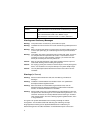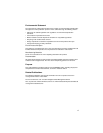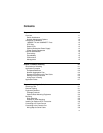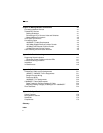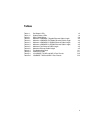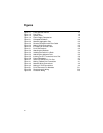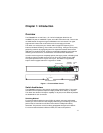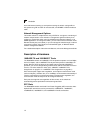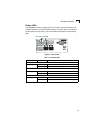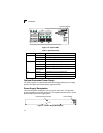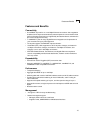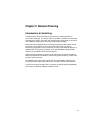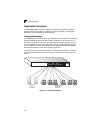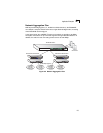
Introduction
1-2
1
store-and-forward checking on each packet crossing the switch, routing traffic at
wire speed using RIP or OSFP for unicast traffic, and DVMRP or PIM for multicast
traffic.
Network Management Options
This switch contains a comprehensive array of LEDs for “at-a-glance” monitoring of
network and port status. It also includes a management agent that allows you to
configure or monitor the switch using its embedded management software, or via
SNMP applications. To manage the switch, you can make a direct connection to the
RS-232 console port (out-of-band), or you can manage the switch through a network
connection (in-band) using Telnet, the on-board Web agent, or Windows-based
network management software.
For a detailed description of the advanced features, refer to the Management Guide.
Description of Hardware
100BASE-TX and 1000BASE-T Ports
The ES3628EA contains 24 100BASE-TX RJ-45 ports that operate at 10/100 Mbps,
half or full duplex, and 2 1000BASE-T RJ-45 ports that operate at 1000 Mbps, full
duplex. Because all RJ-45 ports on this switch support automatic MDI/MDI-X
operation, you can use straight-through cables for all network connections to PCs or
servers, or to other switches or hubs. (See “10BASE-T/100BASE-TX Pin
Assignments” on page B-1 or “1000BASE-T Pin Assignments” on page B-3.)
Each of these ports support auto-negotiation, so the optimum transmission mode
(half or full duplex), and data rate (10 or 100 Mbps) can be selected automatically. If
a device connected to one of these ports does not support auto-negotiation, the
communication mode of that port can be configured manually.
Each port also supports auto-negotiation of flow control, so the switch can
automatically prevent port buffers from becoming saturated.
SFP Slots
The ES3628EA contains two Small Form Factor Pluggable (SFP) transceiver slots.
Optional SFP transceivers can be purchased for 100BASE-FX, 1000BASE-T,
1000BASE-SX, 1000BASE-LX, and 1000BASE-LH media connections.



